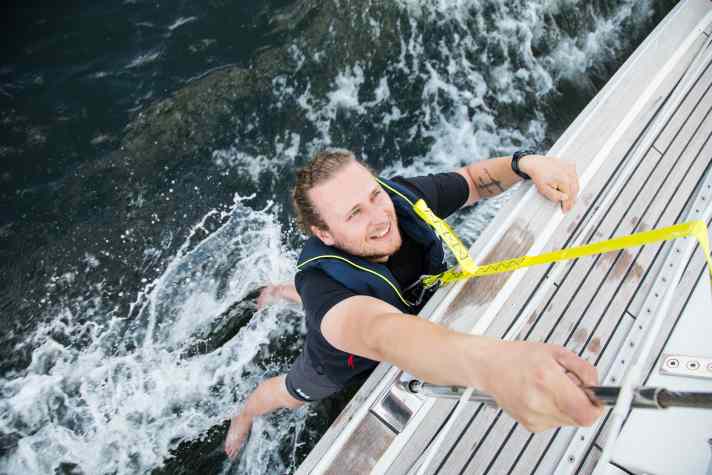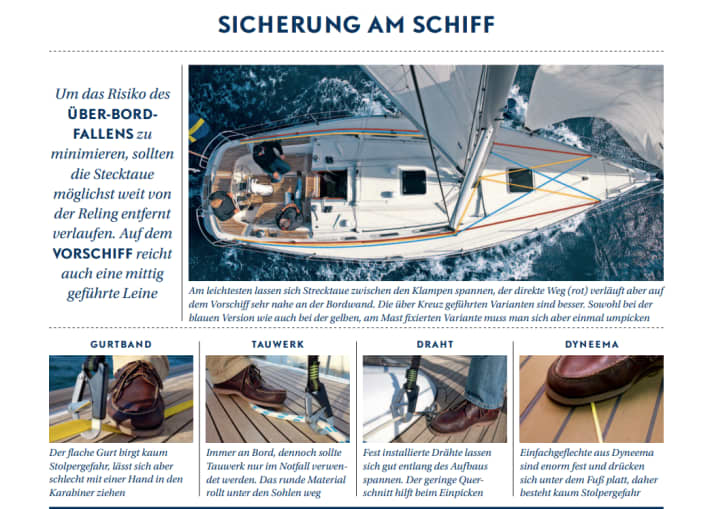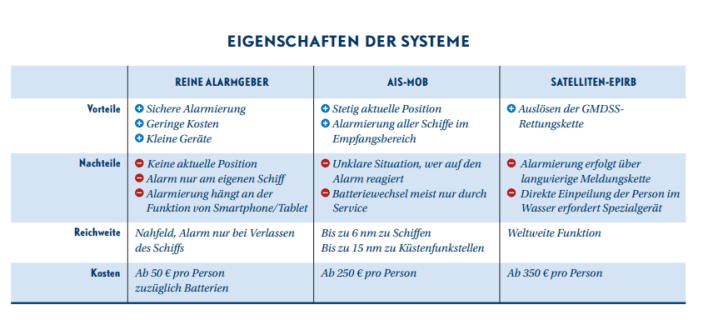Distress at sea: Single-handed sailor goes overboard - and can be rescued with luck
Ursula Meer
· 11.08.2022

Yesterday, Wednesday, a 70-year-old Polish single-handed sailor went overboard his motorsailer in the Szczecin Lagoon in fine weather with a four Beaufort wind. He managed to cling to a fish trap. He had to hold on to it for a good three hours before he was discovered by the crew of a sailing boat. They informed the sea rescuers.
While the sea rescuers were still en route, another sailing yacht turned round and the crew rescued the man from his more than awkward situation: with a water temperature of 24 degrees, his body temperature was only 34 degrees. They provided him with blankets until the sea rescuers arrived. The sea rescuers later took the hypothermic single-handed sailor on board their lifeboat, administered first aid and took him to Ueckermünde, from where he was transported to hospital. The single-handed sailor's unpowered motor yacht was later found and rescued by the DGzRS rescuers. The water police are currently investigating why the man went overboard.
The helping crew was also unlucky: the propeller of their yacht got caught in the cage and it later had to be towed away by the sea rescuers. Although the DGzRS usually charges for purely technical assistance beyond danger to life and limb, this towing operation was carried out free of charge. "In this case, of course, nothing is charged because the crew of the sailing yacht also put themselves in great danger by rescuing the man," explains Nils Sander from the press department of the sea rescuers.
The happy outcome of the accident for the single-handed sailor cannot be taken for granted. Even with a larger crew, rescuing a person who has fallen overboard is not easy. But whether travelling single-handed or with a crew - sailors can do a lot for their own safety.
Safety equipment check
We generally recommend checking your safety equipment at the start of the season, but also in between. In our large Special for safety equipment read what you should look out for and what equipment is recommended.

Well tethered: lifeline and tethers
The safest way to prevent a person from falling overboard is with a lifeline. It is pegged into the mooring ropes or eyelets permanently installed on board and is designed to prevent a person from losing contact with the ship in the event of a fall. However, not all lifelines are the same, and in the case of the mooring ropes, it is important where they are attached so that a fall does not end up beyond the railing. This was the result of a test carried out by YACHT, which is available for download here.

In the worst case: the right lifejacket
Going overboard despite a mooring rope and lifebelt - that's what happened to single-handed sailor Jens Wilken on a single-handed trip with his Etap 26 in the Ems estuary in 2019 (YACHT reported). Thanks to the rising water and his knowledge of the direction of the current, he was able to swim ashore and save himself. He later summarised the lessons he learned from the incident in an interview with YACHT: "First of all, I'm going to move the mooring line further into the middle of the boat and tighten it so that it runs between the bow and the mast and not on the outside. I'll shorten the lifeline so that if I fall again, I won't be hanging completely overboard but will still be able to hoist myself back on board. I'm also going to stretch a line from the bow to the swim ladder on the outside of the boat so that I can shimmy along the entire freeboard. I will attach the swim ladder so that it can be easily folded down from the water. In terms of equipment, I'm going to buy a lifejacket with more buoyancy and a splash guard. There weren't really many waves, but at first I was just struggling to catch my breath after drifting away from the boat."
Jens Wilken describes how important it is to wear a lifejacket that is adapted to the sea area and your clothing. In the large lifejacket test in the 150 and 275 Newton class, you can see which lifejacket is best for you:
Be found: MOB alarm systems
Anyone who has ever experienced how quickly a cap blown overboard can get out of sight will automatically think about possible technical aids for rescuing a person who has fallen overboard.
There are two different product classes of alarm devices for this purpose: those that alert the crew that someone is missing and devices that actively help them to find them again.
MOB-ALARM: The first group is relatively easy to implement. Each person on board carries a small transmitter, usually similar to a wristwatch. A receiver installed on board analyses its signals. If the connection is lost, an alarm is automatically triggered. The transmitters are known as "tags" (pronounced "tägs").
A MOB alarm system assumes that there is another crew member on board. If you are travelling alone, you are better off with a device that triggers a public alarm. It then constantly provides information on the person's current position in the water and transmits a unique identifier; in Germany, the assignment of an MMSI is mandatory for these systems, just like a radio. Terrestrial systems work in direct radio contact with the ship, while satellite systems transmit their data to the rescue control centre via an artificial earth satellite. In both cases, a relatively powerful transmitter is installed and the devices available today also have a GPS receiver. If the person drifts off, the new position is automatically displayed in the next message. Such a device does not yet fit into the wristwatch format; at least one device with the volume of a packet of cigarettes must be carried on the person.
The names of the various device types are somewhat confusing at first:
- AIS-MOB: are worn on the lifejacket and send the position determined by the built-in GPS directly to the neighbouring ships. The function is directly connected to the AIS (Automatic Identification System). Any ship with an AIS receiver can receive the messages.
- AIS type: technically very similar to the AIS-MOB, but intended for the life raft, therefore larger and with a longer operating time.
- EpirbThese are emergency transmitters for ships or life rafts. The distress message with position information is transmitted by satellite to the rescue coordination centre, where further measures are coordinated.
- PLB: Epirb for the lifejacket.
- Radio direction finderThese are now only used in conjunction with satellite-based systems, where they are used to guide rescue vehicles over the last few miles.

If you are travelling within VHF range of a coastal radio station, AIS-MOB is the best choice - regardless of the size of the crew. This is because they allow the shortest possible alerting time and directly reach all vessels that can potentially provide assistance. Combination devices with DSC are ideal for single-handed sailors. Satellite-based systems are advantageous far away from civilisation with a small crew. Where no coastal radio station picks up VHF signals and there are hardly any ships underway, they reliably alert the nearest rescue coordination centre. However, it can take some time before help arrives on the scene.
Safety via app: SafeTrx from the sea rescuers
The SafeTrx smartphone app from the sea rescuers is inexpensive and simple. It records the route travelled by a sailor and continuously sends the positions to a monitoring console of the Bremen Maritime Rescue Coordination Centre. Sailors can enter their departure and destination harbours before setting off and let the app run with them. In an emergency, the Maritime Rescue Centre then has direct access to this information. The app is available for iOS and Android and is free of charge. ForApple iPhones it goes this way forAndroid smartphones it goes this way.

